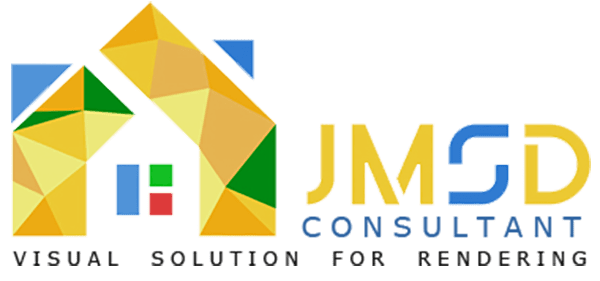Undoubtedly, the utilization of computer-generated imagery (CGI) has demonstrated its effectiveness across various fields, particularly in AEC. The transformative influence of 3D rendering on architecture has established it as the standard in the industry. The ability of 3D visuals to depict the final appearance of buildings well in advance of construction commencement facilitates decision-making processes, project approvals, and marketing strategies. This is why architects, interior designers, and real estate professionals rely on this tool for their projects and listings.
The Advancement of 3D Rendering in Architecture
In the past, architects relied on hand-drawn sketches and paper drawings created on drafting tables to convey their design ideas. However, with the advent of computer-aided design (CAD) software, such as AutoCAD, a significant shift occurred. Architects gained access to these programs in the 1980s, enabling them to create precise digital representations of their architectural designs in a 2D format.
As time progressed, new programs like SketchUp and Revit emerged in the 2000s. These tools continue to be utilized today for generating 3D models of architectural concepts. Simultaneously, advancements were made in Photorealistic Visualization tools. For example, Autodesk 3ds Max allowed architects to breathe life into their 3D models by incorporating realistic lighting, textures, and materials.
The evolution of technology has always been closely intertwined with the pursuit of realism. Presently, cutting-edge hardware and software have the capability to produce 3D visuals that are incredibly lifelike, often indistinguishable from actual photographs.
Advantages of 3D Rendering for Architects
An increasing number of architecture professionals are opting for 3D rendering due to its key benefits such as enhanced realism, intricate level of detail, and seamless customization capabilities.
Through the utilization of architectural drawings, a skilled 3D artist can transform a 2D blueprint into a fully realized 3D model. By incorporating textures and lighting effects, they are able to produce visually striking representations that accurately convey the design concept in a photorealistic manner. Moreover, all elements within the 3D visualization can be easily modified, allowing for the exploration of different design options and their impact on the final structure’s appearance. This flexibility can lead to substantial savings in both costs and time. Detecting and resolving issues digitally and at an early stage of the design process proves to be more efficient and economical compared to making alterations during the construction phase.
Advantages of 3D rendering for professionals clients
Architects are not the only ones who can experience the direct impact of 3D rendering on architecture. The advantages it brings to their clients should not be underestimated either. CGI provides clients with a much deeper understanding of a proposed design. Unlike drawings and blueprints, which can be difficult for those without an architectural background to comprehend, 3D rendering offers easily understandable visual materials. This allows clients to examine all the details and provide effective feedback. The increased transparency leads to informed decision-making by homeowners, resulting in greater confidence and satisfaction with the final outcome. These factors all contribute to a positive collaboration between architecture professionals and their clients.
Potential Limitations and How to Overcome Them
Despite the positive impact of 3D rendering on architecture, there are potential drawbacks that need to be addressed. These drawbacks often arise when the tool is not utilized correctly or when there is a lack of understanding about its capabilities. Look for a team that understands your vision and has a Strong 3D Architectural Visualization portfolio.
For instance, 3D renders typically showcase designs in ideal lighting and weather conditions to create visually appealing images. However, real-life conditions may not always be perfect. Therefore, it is important not to expect the actual building and its surroundings to always match the perfection depicted in the renderings. Additionally, some individuals may mistakenly believe that 3D rendering accurately represents the final project outcome. This is not always the case, especially during the conceptual stage where the focus is on presenting ideas rather than precise details. However, for projects that are well-defined with a detailed brief, it is possible to create realistic 3D visualizations that accurately portray the future appearance of the building. It is crucial to communicate these distinctions clearly to clients in the architectural field.
From the perspective of a 3D artist, striking a balance between aesthetics and realism is essential. Renderings should not appear overly polished and flawless. To prevent unrealistic expectations, they should reflect real-life imperfections. This can be achieved by incorporating small details such as wrinkles, folds, cracks on surfaces, as well as dust and debris on the ground. By doing so, the 3D renderings will appear authentic and true to life.
The Evolution of 3D Rendering in Architecture
Advancements in computer technology are constantly pushing the boundaries of 3D rendering, and architecture is no exception. From AI-enhanced renders to interactive immersive tours, innovative solutions are revolutionizing the field of 3D rendering.
For example, virtual reality now allows viewers to experience digital walkthroughs of architectural projects in a truly immersive way. By using a specialized headset, users can explore a virtual representation of a building as if they were physically present on-site.
AI tools are also playing a crucial role in optimizing the process of creating 3D renders. By quickly generating visual references and raw concepts, these tools streamline tasks and improve the overall quality of the final results.
Additionally, immersive 3D tours are changing the game by offering users the ability to customize designs and environments in real-time. These tours leverage cloud-based rendering, allowing them to be streamed to any device connected to the internet without the need for additional hardware. This innovative technology is making architectural visualization more accessible and interactive than ever before.
Conclusion
In conclusion, the undeniable positive influence of 3D rendering on architecture surpasses any potential drawbacks. Skilled 3D artists can effectively utilize CGI as a flexible and valuable tool. Their expertise enables them to create captivating photorealistic visuals of architectural designs that are both informative and aesthetically pleasing. Therefore, there is no need to hesitate when considering CGI for your presentations and marketing materials. Opt for our 3D rendering services to obtain stunning images that showcase the full magnificence of your architectural masterpiece to your clients.
Contact us here for 3D Rendering and Animation Services now!? Reach us out with DM here on: | Get in touch email us at [email protected]





